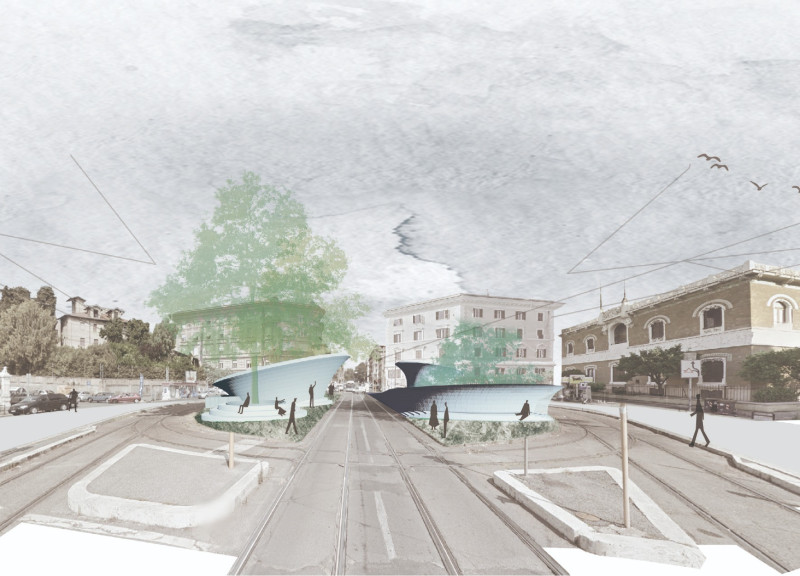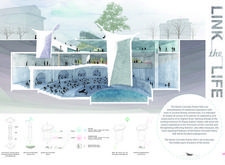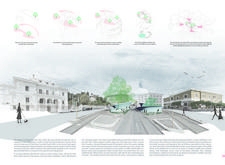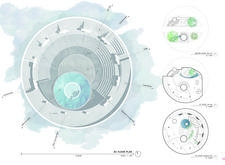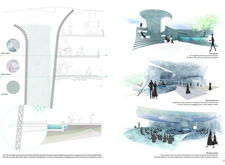5 key facts about this project
### Overview
The Rome Concrete Poetry Hall is situated in Rome and serves as a cultural hub that reflects both the heritage of ancient Roman architecture and contemporary design methodologies. The primary intent is to create a space dedicated to poetry that fosters a sensory and interactive experience for visitors, allowing them to engage with both literary and architectural elements. The design emphasizes a connection between underground spaces and above-ground activities, symbolizing a dialogue between different layers of artistic expression.
### Material Palette and Structural Composition
A careful selection of materials bridges traditional aesthetics with modern functionality:
- **Concrete** serves as the primary structural element, evoking the grandeur of historical Roman architecture while providing durability and light-reflecting qualities that enhance spatial dynamics.
- **Glass** facilitates transparency and natural light entry, blurring the lines between interior and exterior environments.
- **Wood** is introduced in communal areas, adding warmth and comfort that contrasts with the starkness of concrete.
- **Steel** is incorporated for structural support, integrating seamlessly with the other materials to create a cohesive architectural framework.
Together, these components contribute not only to the building's structural integrity but also to its thematic exploration of tradition interwoven with contemporary design.
### Spatial and Functional Design
Distinctive design elements characterize the hall's spatial organization:
- **Piers and Arches** modeled after ancient Roman forms contribute to both aesthetic appeal and structural efficiency.
- The layout includes flexible, multi-functional spaces—such as performance areas, cafés, and conference rooms—designed to accommodate a variety of artistic activities.
- Unique underground components facilitate an acoustically rich environment, fostering an immersive experience where music and poetry can resonate with natural sounds.
- Thoughtfully designed water features enhance the auditory experience, serving both aesthetic and functional purposes.
The hall's configuration supports experiential diversity by segmenting areas dedicated to various epochs of poetry, encompassing historical, transitional, and contemporary themes while promoting environmental sustainability through rainwater collection initiatives. This architectural endeavor strives to engage the community in a cultural dialogue centered on poetry, reaffirming its significance within Rome's rich historical context.


